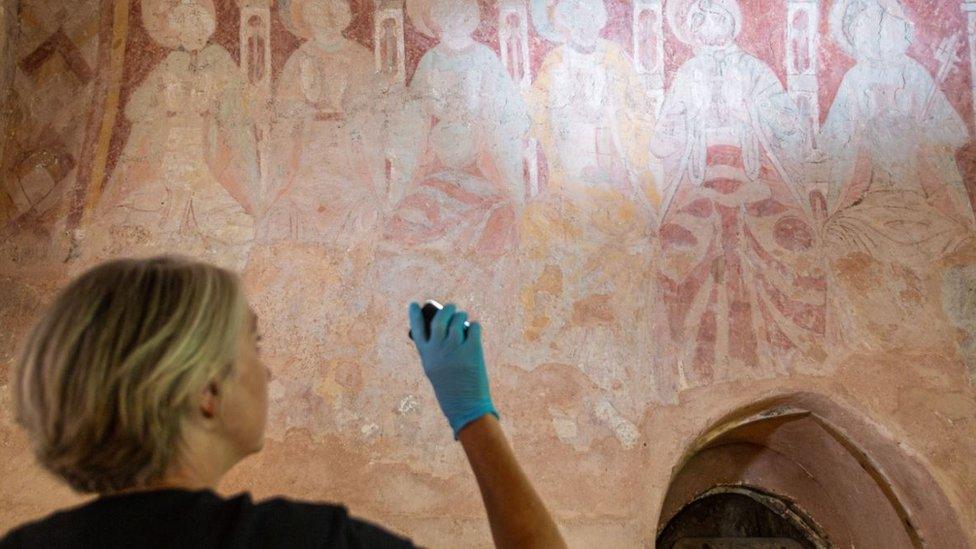National Heritage List for England's eye-catching protected sites
- Published

A bombing range target indicator and observation post in Devon have been protected
A moving water sculpture, a Victorian chemist shop and a World War Two observation post were among hundreds of historic places protected in 2019. Here's a look at some of the most eye-catching.
There were 553 new protected historic buildings and sites on the National Heritage List for England, external in 2019, including a vertical spinning tunnel, a lido and a Turkish bath.
Heritage Minister Helen Whately said England was home to many historic and sometimes quirky sites.
"Protecting our heritage is of huge importance so future generations can better understand all the things that have made this nation great," she said.
Sandford Parks Lido, Cheltenham
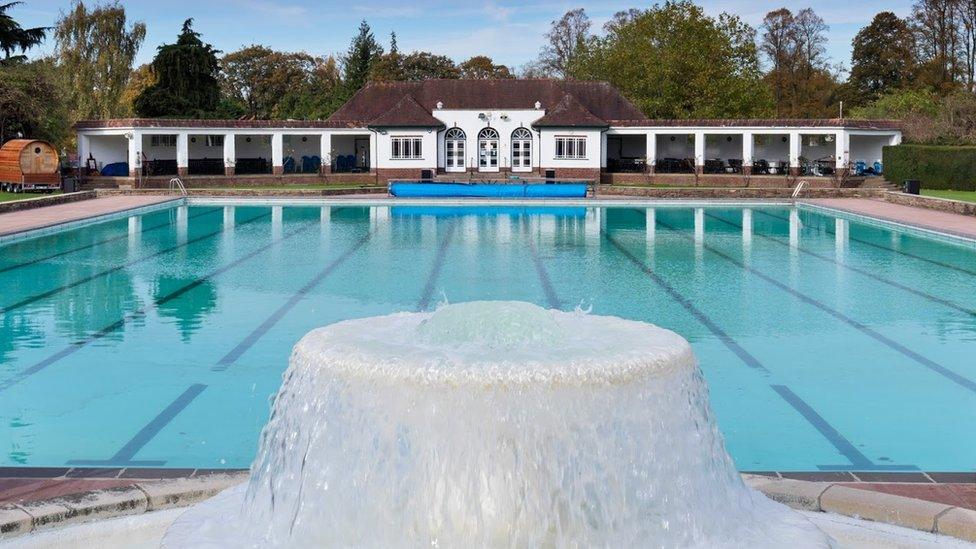
Sandford Parks Lido opened in Cheltenham in 1935
Sandford Parks Lido in Cheltenham was built for the local council and opened in May 1935.
Spa resorts were popular during the inter-war years when fresh air and fitness were widely embraced by the public.
Original fittings still intact include ornate turnstiles to the main entrance and its filtration plant room with original boilers and compressors.
Former chemist shop, Suffolk

Inside the former chemist's shop cupboards are labelled "poisons"
The former chemist shop in Lowestoft, Suffolk, was purpose built for chemist and druggist Robert Morris in 1851. It was still in use as a pharmacy until 2012.
Its original and largely unaltered Italianate shop front, with its arched windows and decorative mouldings, was very fashionable at the time, yet few survive today.
Inside, mirror backed shelving and cupboards held goods under gilt labels for "poisons" and "surgical appliances", while wooden drawers with glass handles stored dried and powdered chemicals - a feature known as a "drug run".
The Porchester Centre, London
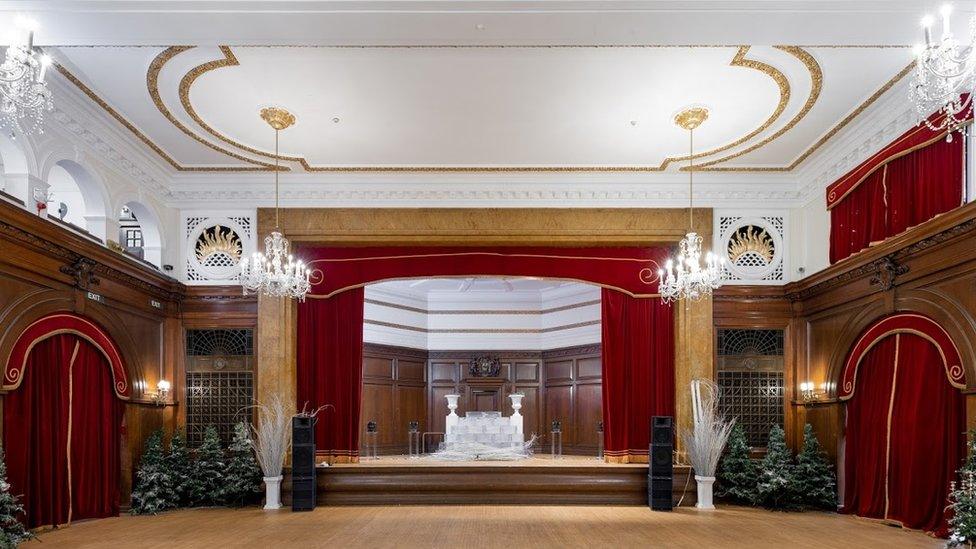
The Porchester Centre in Bayswater featured in Monty Python's "The Meaning of Life"
The Porchester Centre in Bayswater is an elaborate civic building of the 1920s that survives with little alteration.
The opulent main hall of the centre's Turkish bath complex featured in Monty Python's The Meaning of Life, with the Mr Creosote sketch filmed there in 1982.
The first Victorian Turkish bath in England opened in 1857 and London's first complex followed soon after in 1860.
England had 500 Turkish baths at the height of their popularity and the Porchester is one of only five still in use.
Piazza Fountain, Liverpool
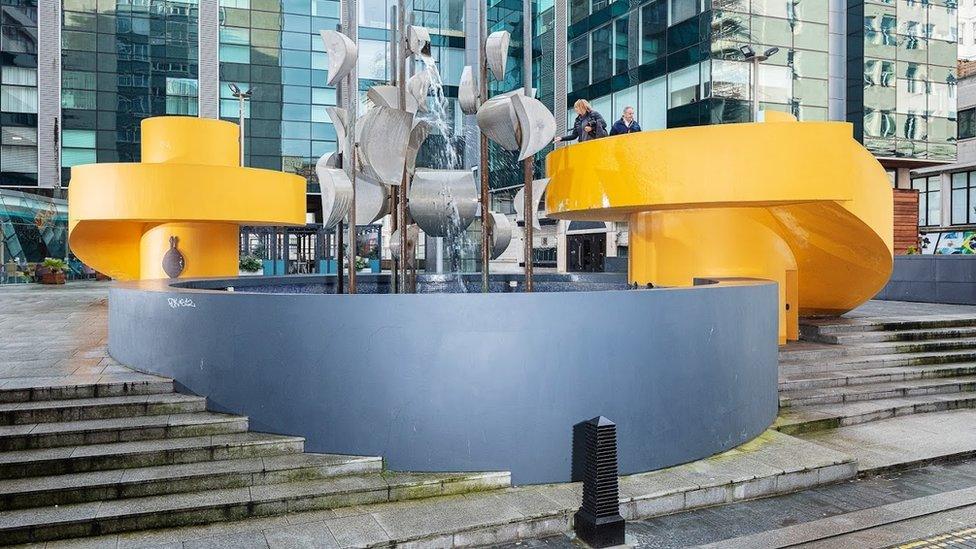
The sounds created by the falling water are intended to mimic a stormy sea
Liverpool's Piazza Fountain, known locally as the Bucket Fountain, is a kinetic water sculpture.
It was made in the late 1960s by renowned Welsh fountain designer Richard Huws and is the only surviving example of his water sculptures.
The fountain includes 20 hoppers, or buckets, of various sizes set at different heights, which tip unexpectedly when filled.
The sounds created by the falling water are intended to sound like a stormy sea to symbolise Liverpool's importance as an international port city.
Bombing range indicator and observation post, Devon
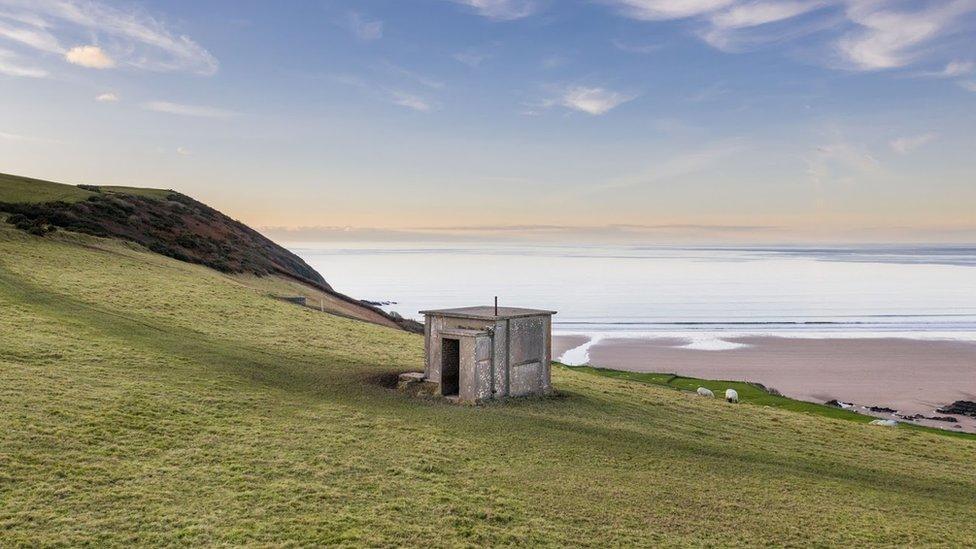
The north Devon coast was one of the major training centres for allied troops in the run up to D-Day on 6 June 1944
A World War Two bombing range target indicator and observation post at Putsborough Sands are considered to be the only two surviving landmarks of their kind in Devon.
The indicator - a ground-level concrete arrow - and observation post were constructed in about 1942, according to Armament Training Manual specifications and for use by RAF high-altitude bombing crews.
You may also be interested in:
Vertical spinning tunnel, Bedfordshire
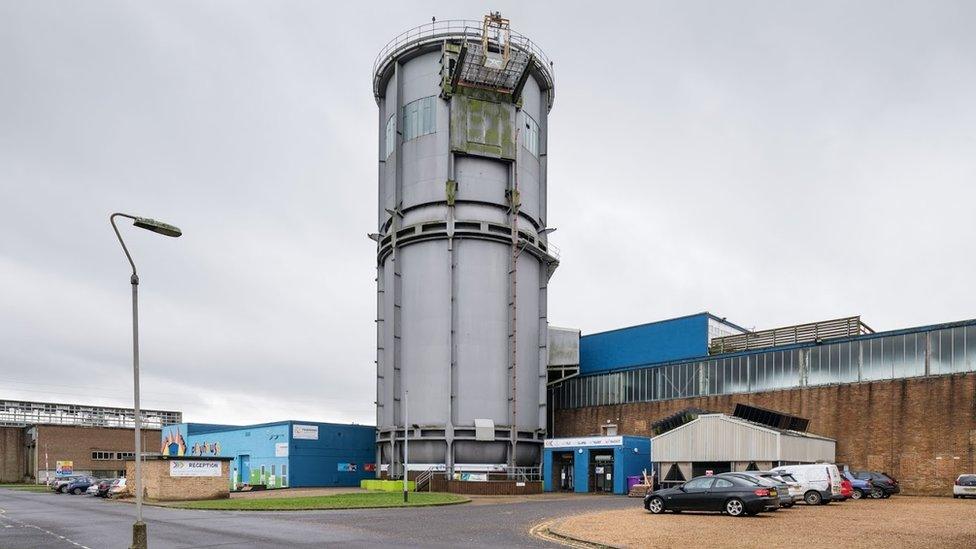
The vertical spinning tunnel can be found at the former high speed laboratory complex in Milton Ernest
The vertical spinning tunnel, built between 1948 and 1955, was a specialised facility to investigate aerodynamics and flight systems.
It worked by blowing air upwards against the gravitational force on a free-falling aircraft model, allowing the study of the ways in which an aircraft could enter a spin and how to recover from it.
It was the only steel pressurised vertical spinning tunnel ever made, and its construction pioneered the technique of welding on site pre-formed metal plates for the assembly of large pressure vessels.
- Published24 September 2019
